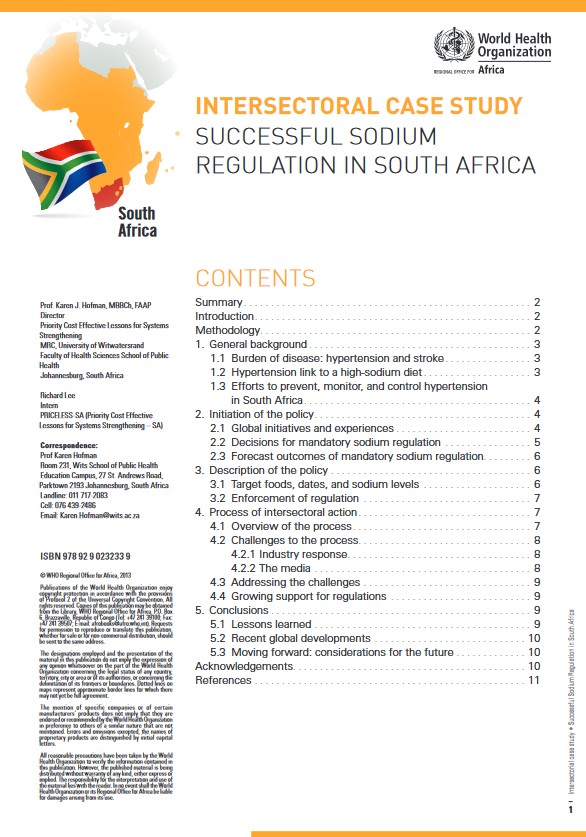World Health Organization, United Nations Development Programme (UNDP)
Pacific NCD Summit: Translating global and regional commitments into local action
Report
08 May 2024
World Health Organization. Regional Office for Africa
27 Nov 2013

As a consequence of urbanization and shifts in consumption patterns, South Africa (SA) suffers from high hypertension rates previously prevalent in resource-rich settings and wealthier populations. Trends over time in SA reveal both a growing prevalence of hypertension and an exponential increase in the rate. Over a decade, records have shown a 100% increase in the prevalence of hypertension in men and 50% in women since 1998 (1). In the 33–44 year age group (a key working population demographic), the hypertension prevalence went from 22% to 40% in men and from 24% to 34% in women in just 10 years (1). These hypertension rates in SA have resulted in increased stroke and cardiovascular disease, adding a major strain to a fragile healthcare system and to the government health budget.
Studies show that salt consumption levels are linked to the hypertension levels, and the average South African consumption of salt per person is about double the 5 g/day amount recommended by the World Health Organization (WHO) (2). Since the sodium in salt is the actual component linked to hypertension, the 5 g of salt/day translates to roughly 2000 mg of sodium (Na)/day, and the rest of this discussion will focus on and only refer to sodium.